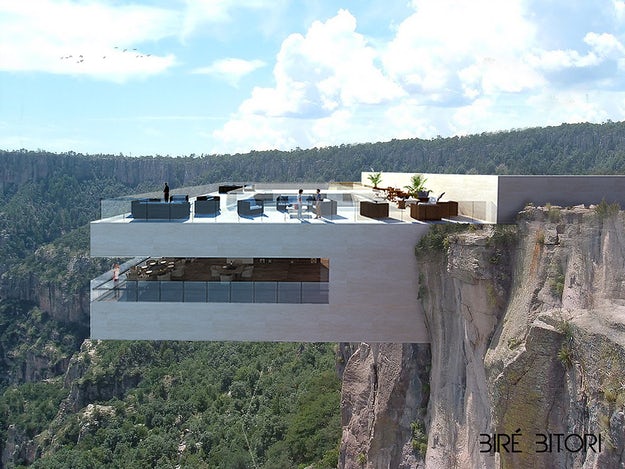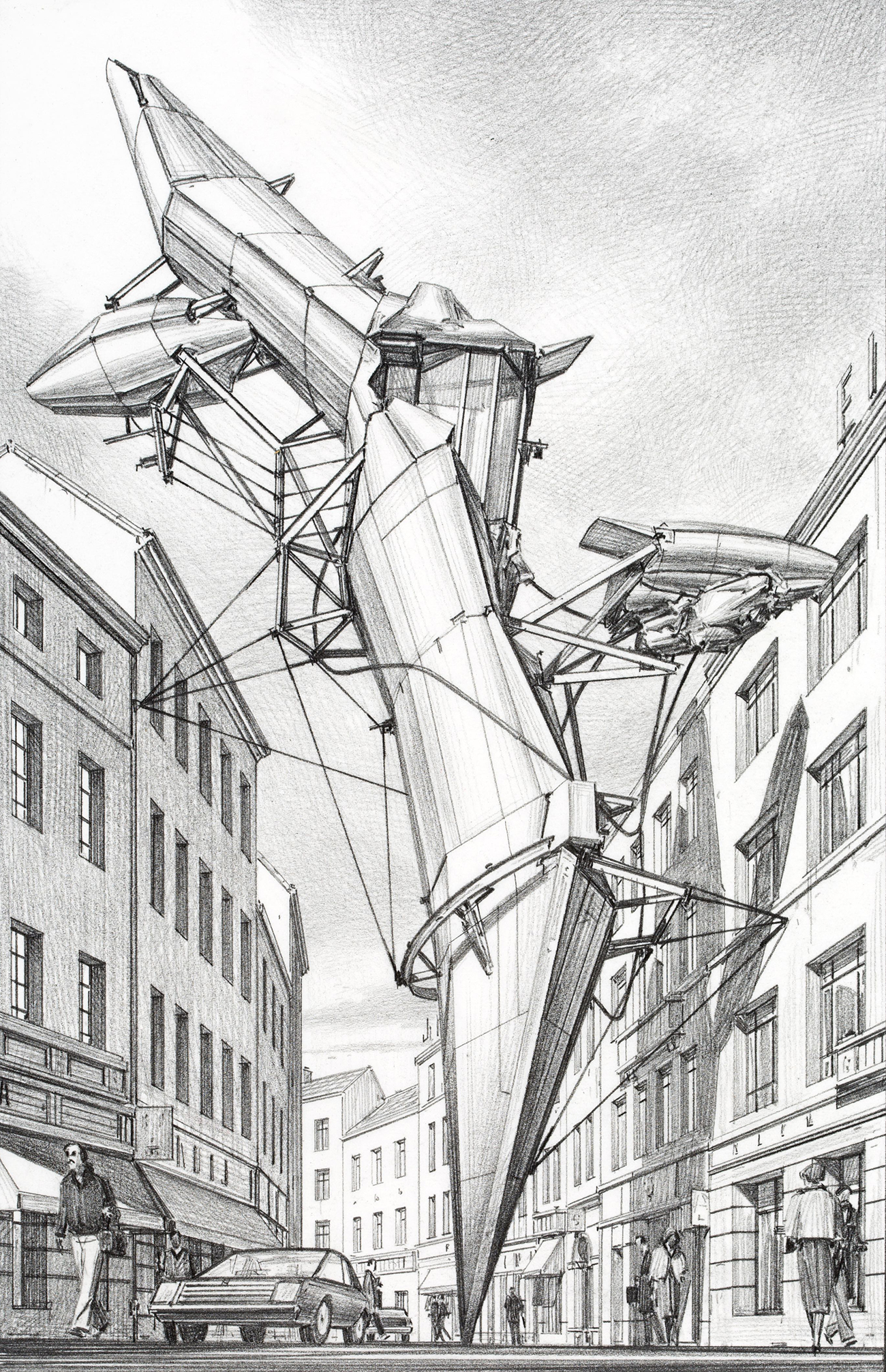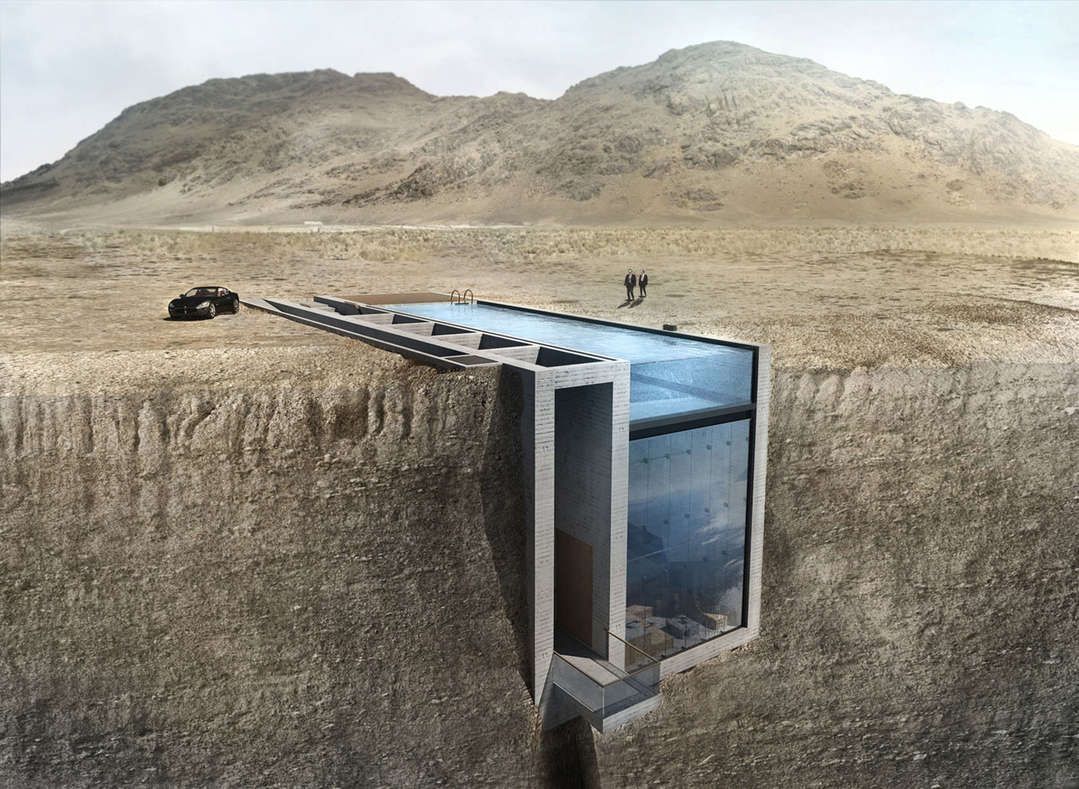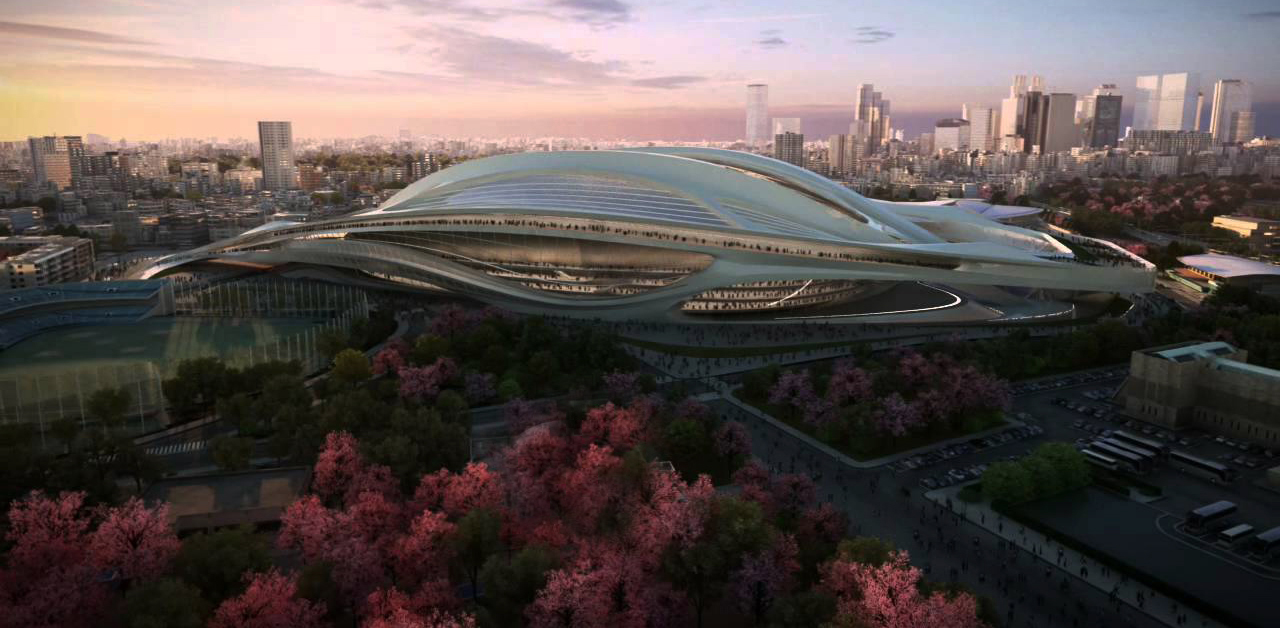Architizer is delighted to reveal the winners of the 2025 Vision Awards! We'll continue celebrating the power of architectural representation — get on the program mailing list by clicking here.
Modern architectural renderings provoke a wide variety of emotions in those that view them, but, more often than not these days, they tend to make people angry. I’m not talking about the slick and immersive imagery produced by professional rendering studios for big architecture firms. I’m talking about those individuals that create conceptual visualizations that are, for want of a better word, “wacky”.
Think huge cantilevered concrete bars overhanging epic canyons. Epic, Brutalist pagodas that reach to the very top of tree canopies in remote forests. Glistening glass houses on impossibly slender stilts.

Modern pagoda concept by Amey Kandalgaonkar; image via Design Boom
People flock to the comments section beneath these outlandish images, pointing out numerous structural fallacies and lamenting the author for designing with their head in the clouds, when there is plenty of work to be done down here at ground level. Their grievances are, in many ways, understandable — these conceptual projects have a tendency to steal the spotlight from real-world projects, their Instagram-friendly compositions filling the feeds of Dezeen, Design Boom and Architizer.
The question is, if these renderings are so obnoxious and not worthy of publicity, why do they receive so much attention? The numbers don’t lie: Many of Architizer’s most viewed articles and most ‘liked’ social media posts contain fantastical works of architectural fiction. It is therefore easy to dismiss them as ‘clickbait’, visual fodder for media sites to maximize their web traffic and little else of substance.

Biré Bitori by TALL Arquitectos; image courtesy TALL Arquitectos
There is, however, a flip-side to this argument. Peeling away the vanity, the large amount of attention these renderings receive arguably proves their value to the architectural profession. Freed from the constraints of construction, contracts and clients, these conceptual projects are a pure manifestation of their author’s imagination.
Similar to those exaggerated, otherworldly costumes worn by models on a cat walk, they are less concerned with function and more about ideation. These renderings are — with a few notable exceptions — not designed to be built, but rather, to spark conversation about what is possible in the realms of architecture, engineering and construction.
While these concept designers today harness high-tech rendering software to realize their visions, the art of outlandish visualization is nothing new. Whether they have been created using pencils, pens or paintbrushes, surreal concepts have long inspired real-world, built projects.
The iconic style of the late, great Zaha Hadid was heavily influenced by the extraordinary, imagined sketches of Lebbeus Woods. The impossible spatial explorations of Escher have been inspired countless architects, and even been brought to life by Japanese design studio Nendo. Dozens more have channeled the spirit of Peter Cook’s Archigram — creator of monstrous yet joyful concept cities that grow and walk like living beings.

Lebbeus Woods sketch; image via Contemporary Art Daily
Ultimately, it comes down to this — there is room in the world for both realistic and otherworldly visualizations. Both have their place on the spectrum of architectural representation. Every rendering should be measured according to its communicative value: Does it reveal something about architecture that was not previously known? Does it provide a client with insight into the potential for their site? Does it spark inspiration, debate and conversation about architecture, in which entirely new ideas might emerge?
If the answer to any of the above questions is yes, then I say: Let’s celebrate that crazy architectural rendering. And then create more!
Architizer is delighted to reveal the winners of the 2025 Vision Awards! We'll continue celebrating the power of architectural representation — get on the program mailing list by clicking here.





